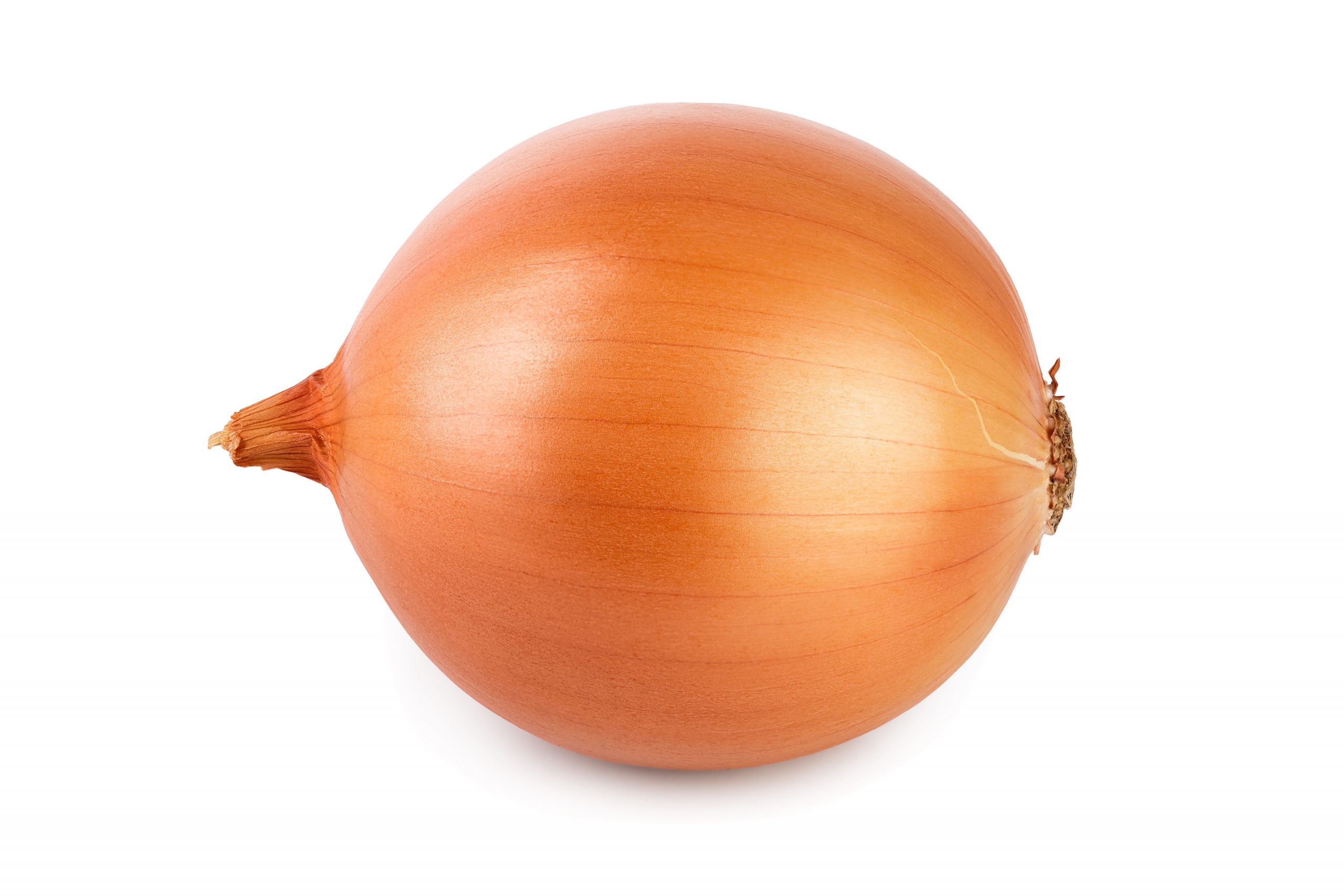Seasons/Availability
Yellow onions are available year round.
Current Facts
Yellow onions, botanically classified as Allium cepa, are the most popular variety of onion in the United States and is one of the most widely cultivated members of the Amaryllidaceae family. The name “onion” was derived from Latin word “unio” meaning single or unity because when onions grow they are usually singular bulbs instead of many. Though considered to be a vegetable, yellow onions are actually an herbaceous biennial.
Storage
Fresh yellow onions should be stored in a cool, dry place with plenty of air circulation like a pantry, cellar or cold storage room. When properly stored away from sunlight, yellow onions will keep for up to two months. Refrigeration is not recommended as this will cause the onions to become moist and spoil faster. Before using, discard any onions that are soft, have a wrinkled skin or show signs of sprouting.
Usage
Yellow onions are one of the most versatile ingredients used in cooking, providing flavor to both cooked dishes and uncooked salads. They can be caramelized for use in sandwiches, soups, stews and casseroles or they can be diced and sautéed as a base for sauces and marinades. Their mild flavor pairs well with beef, pork, poultry, seafood, tomatoes, mushrooms and potatoes. Yellow onions can also be eaten raw in salads or pickled for an added pungent crunch to appetizers and sandwiches. As with any cooking onion, the peel should be removed before use.
Nutritional Value
Yellow onions are an excellent source of vitamins C and B-6, iron, folate and potassium. They also contain phytochemicals such as quercetin which is a powerful antioxidant known to have anti-inflammatory properties. Onions are low in calories and naturally fat free making them an ideal addition to any healthy diet.



